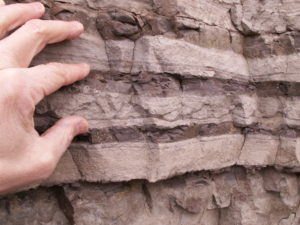Aug
25
“It is awe inspiring to us that God created his natural world in a way that allows us to explore the unobserved past with such remarkable clarity.” — Gregg Davidson and Ken Wolgemuth
This week’s post includes another excerpt from Dr. Hugh Ross’s book A Matter of Days, 2nd ed. (2015), along with a related article quote. In a continuation of our look at “Nature’s Calendars” from last month, let’s “listen” to a short review of dating via tree rings (dendrochronology), coral reefs, and varves….
“Tree-ring dating is based on analyzing ring patterns in trunks of trees that live for thousands of years. Some living bristlecone pines, for example, possess 5,000 annual rings. By overlapping ring data of living trees with data from dead trees found in the same locations, dendrochronologists can establish a reliable record of Earth’s recent history.
The bristlecone pine chronology of the American Southwest now exceeds 8,500 years with the possibility that 3,000 years may be added in the near future. The European oak and pine chronology, a composite of work done in Germany and Northern Ireland, now reveals over 11,000 years. Botanists have shown that a Palmer’s oak in the Jurupa Hills of Rubidoux, California, reproduces solely through generating exact clones near its original trunk. Tree ring counts and the dimensions of the clonal stand identify this particular oak tree as the world’s oldest living plant at 15,600 +/- 2,500 years. Here again, volcanic eruptions in recorded history have left their signatures on certain tree rings, verifying that the rings are annual growths.
As with layers in the ice and sediment cores, the annual rings of these ancient trees contain radiometric isotopes. Analysis of these isotopes establishes that radiometric decay constants did not vary at any time throughout the past 15,000 years. Analysis of the tree rings also demonstrates that the American Southwest and Western Europe did not experience inundation by a massive flood within the past 15,000 and 11,000 years, respectively.
The record of coral reef layers extends back 400,000,000 years. Coral colonies produce not only annual layers but also daily bands. Therefore, ancient coral reefs faithfully record Earth’s past rotation rates. Coral reefs dated to be 488,000,000 years old show Earth’s rotation rate at that time was only about 21 hours long. That rotation period is consistent with 488,000,000 years of [subsequent] tidal braking of Earth’s rotation rate by the gravity of the Moon and Sun.
As with ice and sediment core layers and tree rings, the different coral layers and bands store radiometric isotopes. In this case, the law of gravity dictates that the Sun-Earth-Moon system is at least 488,000,000 years old and that radiometric dating gives a reliable measure of the past 488,000,000 years of Earth’s history.
Initially used to describe annual layers in glacial lake sediments, varves now refer to any annually deposited freshwater sediments. Like the layers in ice cores, varves contain radioactive isotopes and the dust signatures of volcanoes that have erupted throughout recorded history.
While for some varve sites the layers are nonannual, in the great majority they are. In addition to the volcanic dust signatures, pollen counts, and diatom counts in the varve layers show that at most varve sites the layers are annual. This majority includes the six million laminae (two laminae = one annual layer) in the Green River shales of the Western United States. The Green River site reveals that Earth is at least 3 million years old, that radiometric decay rates have varied in no significant way over the past 3 million years, and that radiometric dating techniques yield reliable age determinations throughout the past 3 million years.”
Cool, eh?
In a recent article, Drs. Gregg Davidson and Ken Wolgemuth briefly discuss tree rings, varves, and carbon-14 dating.
“Young-earth advocates challenge all three of these methods, arguing that:
o conditions during and after Noah’s Flood could have caused trees to put on multiple rings each year
o cross-dated tree rings can be mismatched
o multiple sediment couplets can happen each year
o varve records are often discontinuous (intervals with no couplets)
o carbon-14 production and decay rates could have varied widelyWe can put these competing claims to the test by cross-checking the three methods….”
They then discuss this cross-checking briefly, including providing a nice little graph. (You should definitely read the article.) Davidson and Wolgemuth conclude with the following:
“It is awe inspiring to us that God created his natural world in a way that allows us to explore the unobserved past with such remarkable clarity. Nature reflects the orderliness and consistency of its Author. The young-earth view, in contrast, can explain such data only by calling on a God who manipulated multiple tree rings per year, multiple sediment layers per year, and varying carbon-14 production and decay rates, to make it precisely – and falsely – mimic the expectations of conventional science. To us, that describes the capricious gods of ancient Mesopotamia, not the God of Genesis.”
Well said, gentlemen. Amen!
















